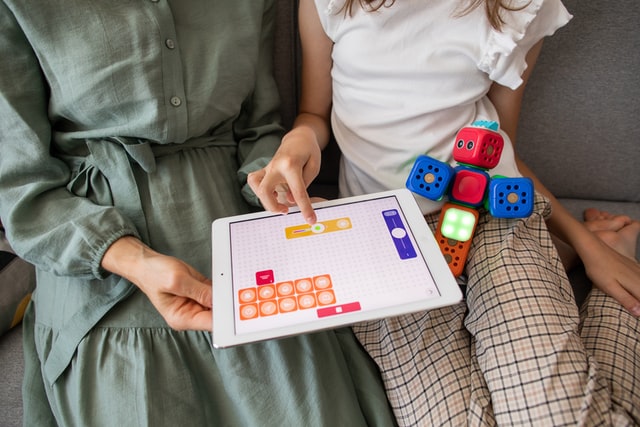Living the smart life
by Chris Green, Tech Advisor
There are so many different types of technology out there, it can be hard to keep up. In this series of blog posts, I’m going to take a look at some of the latest accessibility tech to see if it’s worth it. Whether you’re a tech expert or just starting to think about the possibilities, we’re sure you’ll find something new here.
In this post, we will discuss the merits of introducing a smart speaker such as an Amazon Alexa or Google Home into the house, and the associated costs of entry.
So, what is smart tech?
This is a diverse subject with many offshoots, but the general definition is as follows:
It is a technology that uses artificial intelligence, machine learning, and big data analysis to provide cognitive awareness to objects that were in the past considered inanimate.
In this series of blog posts, we will be focusing on ‘Smart Devices’. The definition of a smart device is as follows:
A smart device is an electronic device, generally connected to other devices or networks via different wireless protocols such as WiFi. They can operate to some extent interactively and autonomously.
Some examples of smart devices you may already be familiar with:
- Amazon Alexa
- Google Home
- Smart Phones (Android or Apple)
What is a Smart Speaker?
If you’ve ever heard someone saying ‘Alexa’… ‘Hey Google’… or ‘Siri’ then they are most likely initiating contact with a smart speaker. A smart speaker is a speaker with a built-in microphone that allows users to interact with other smart devices or internet services using their voice.
Saying these keywords (‘Alexa’… ‘Hey Google’… or ‘Siri’) is a way of opening a line to the internet, the same as picking up the phone is opening a line ready to dial a number. It is the job of a smart speaker to translate your spoken word into text which is then sent via the internet as a question or command.

What will it do for me?
The examples below can be performed by using voice commands anywhere in the room:
- Listen to your favourite radio station, audiobook or play your favourite song
- Set alarms, timers, reminders, calendar entries and create/recall lists
- Listen to the news and weather
- Recipes, conversion tools and calculations
- Make free calls
- Control other smart connected devices such as lighting, TV, heating thermostats and power points
What will I need to get going?
- An internet connection at your home address
- An email address
- A smart phone or tablet for initial setup **
- A smart speaker
**it’s possible that a friend could complete the initial setup for you
How much will it cost?
If you have no internet, smart phone or tablet then the initial setup cost will vary depending on the devices you choose. The prices below are based on what I feel would provide adequate performance for value.
One off cost
Email account – FREE
Smart phone or tablet – £80
Smart speaker – £30
Ongoing costs
Average cost for a basic internet connection – £19 pcm
Is it worth it?
Personally, as someone who has been using smart devices for a number of years, I have grown accustomed to the convenience of having an encyclopaedia of information to hand for those moments when the grey matter isn’t up to the job.
I also like that my smart speaker doubles up as a radio alarm clock, controls my lighting, I can set my house alarm remotely or control my heating if I’m away.
Do I ‘need’ a smart speaker in my life? Probably not, but it sure does help.
If you’d like more advice or help setting up tech in your home, please do get in touch with me, or my colleague Ali, and we can discuss the possibilities available to you.
With the aim of increasing the scope and capacity of our tech services, we’re delighted to introduce the newest member of the SSW team: Chris Green! Over to you Chris…
“Hello! I’m Chris your new Tech Assistant at SSW. I live in Worthing with my partner, three children and a border terrier called Ted.I have a background in IT support and a love for all things tech in general. I have a particular interest in home automation and future developments in this area.I look forward to meeting you all soon!”
If you would like help from our tech support team, do get in touch. They’d love to help you!
Recently joining the team at SSW is Alison Bates. Alison, who has a vision impairment herself, will be our new Tech Advisor.
Welcome to Alison! Here she introduces herself:
I am visually impaired having been born blind (congenital cataracts). I had surgery at birth to give some sight but at 34 I had a detached retina in my right eye which could not be saved with surgery.
I am married with two daughters, both of whom have the same eye condition as me. The oldest is visually impaired and the younger one is registered blind.
I enjoy live music, festivals and theatre, and I am really into the 1950s, especially the fashion. I also enjoy travelling and exploring new places.
I am really excited about the Tech Advisor role; I’m looking forward to getting to know our members and building great working relationships so they can get the best out of their technology and feel confident using their devices.
We’re highlighting our objectives for the year in a series of blog posts. If you missed the first one (about improving our communication with members) you can catch up here. In this one, we’re focusing on how we’re going to develop our technology for VI service.
We’ve been offering some technology products for VI in the last couple of years but this is an aspect of our services that we really want to improve. Part of that effort is to keep up to date with assistive technology, as well as other relevant technologies. It’s one thing going out and buying a stack of ‘things’ but actually knowing what’s on offer, how each item works, the benefits or drawbacks of each product and making sure we’re recommending and buying products that will not be obsolete within six months is crucial.
With that in mind, we’re actively researching and testing products so we have the best choices to offer our members.

Although our current team is excited about the prospect of learning more about technology for VI we’re aware that there are very few of us. For that reason, we’re recruiting both staff and volunteers who will be the ‘go to’ on VI tech issues. We’ll all make sure we’re up to speed but there will be specific people who are dedicated to assisting members make decisions about which tech to use, explaining how to use it and fixing problems, should they arise.
And it’s not just our people who will be key to this improvement; our Centre at Rowlands Road will be sufficiently equipped and resourced to provide training, tech support and guidance to members and guests.
Clearly, acquiring technology – whether for VI or otherwise – generally comes at a cost which not everyone is in a position to afford. The final aspect of our objective is to provide a loan-to-buy service for those who are unable to access devices on their own. This may be because cost is a factor but also because no-one wants to buy something that they not long after decide isn’t for them (but would suit someone else better). This format is perfect: try the product at home, and on a day-to-day basis (rather than just testing it in a shop or showroom) so you establish whether it’s right for you. When you decide it is what you’re after, there’s no need to hand it back, you just carry on using it seamlessly. We’re also securing discounts with suppliers so if you order through us or get a referral code, you’ll be able to make a saving on certain products.
We hope that our technology for VI service will benefit a large number of our members and, perhaps, make aspects of their life easier and more pleasurable. We’re always keen to hear from members (and their families, friends or carers) to understand how we can best support independent living but, more than that, enhance enjoyment and fun too. If you’ve got suggestions you’d like us to explore, please do get in touch.

